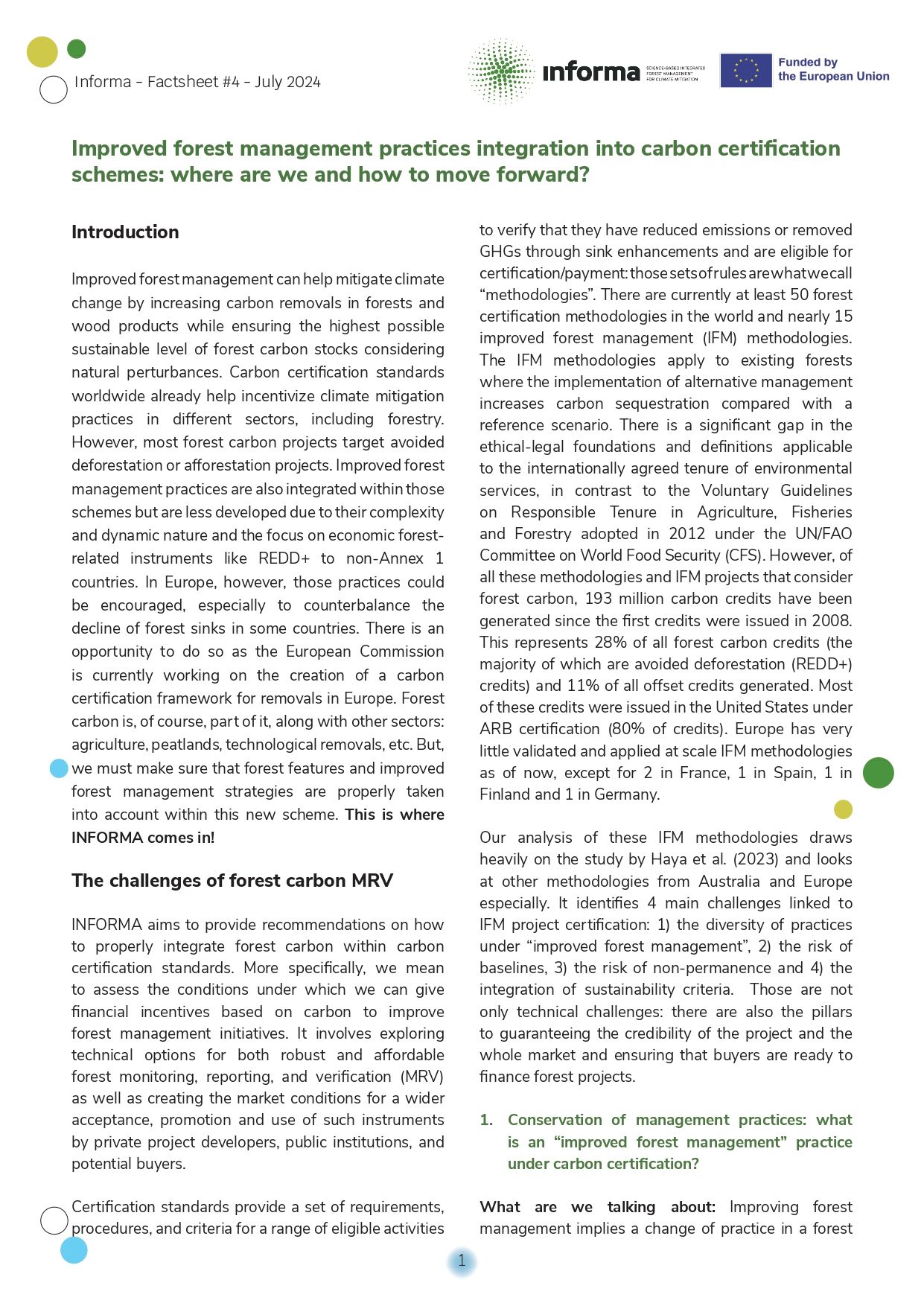Improved forest management practices integration into carbon certification schemes: where are we and how to move forward?
Improved forest management (IFM) can help mitigate climate change by increasing carbon sequestration in forests and wood products while ensuring the highest possible sustainable level of forest carbon stocks, taking into account natural disturbances. In Europe, these practices could be encouraged, especially to counterbalance the decline in forest sinks in some countries. There is an opportunity to incentivize these practices under the European Carbon Removal Certification Framework (CRCF) regulation. Forest features and improved forest management strategies need to be properly integrated within this new scheme. This is where INFORMA comes in!
Our analysis of 15 IFM methodologies identifies four main challenges linked to IFM project certification:
1. Diversification of management practices under carbon certification
Improving forest management can mean many different things, but most international methodologies focus on reduced harvesting. We need to develop additional methodologies that encompass a wider range of practices, backed by science, to demonstrate carbon impact and risk reduction.
2. Baselines: the main risk of carbon certification projects
The primary risk linked to carbon certification standards lies in the establishment of the baseline, which can lead to over-crediting.
We recommend:
- Limiting the choices available to project developers for defining their baseline, in order to reduce information asymmetry and bias.
- Exploring the use of dynamic baselines.
- Choosing baselines that are close to initial carbon stocks.
- Measuring and verifying carbon stock increments.
3. Carbon certification tools need to better integrate the future impact of climate change to ensure carbon permanence
The future impact of climate change on forests is likely underestimated in current non-permanence management tools. Larger buffer pool deductions, along with regular updates to protocols based on the latest science, would help address this issue. Methodologies that reduce the risk of catastrophic wildfires and increase long-term resilience should also be considered.
4. Increase visibility and robustness of sustainability criteria
In practice, there is significant heterogeneity between IFM methodologies in how they integrate sustainability impacts. Each methodology sets its own rules, leading to a lack of clarity for project financiers. Guidelines for integrating and measuring sustainability issues should be developed to ensure greater consistency between methodologies and greater transparency for projects.



